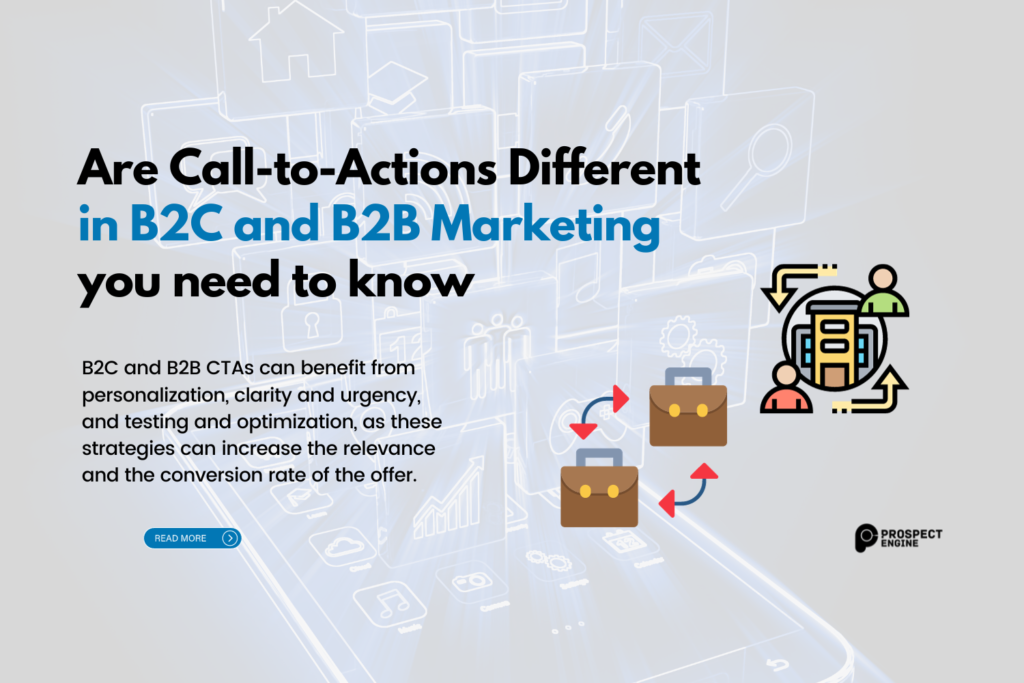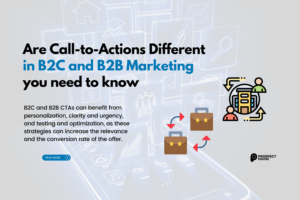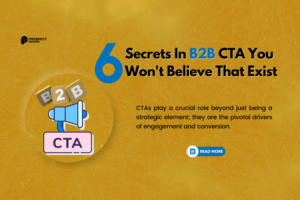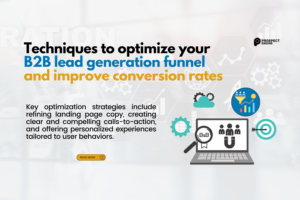A call to action (CTA) is a phrase or button that prompts the reader to take a specific action, such as signing up for a newsletter, downloading a free ebook, or purchasing. CTAs are essential elements of any marketing campaign, as they directly influence the conversion rate and the return on investment. However, not all CTAs are created equal. Depending on the type of business and the target audience, CTAs need to be tailored to suit the needs and preferences of the potential customers.
B2C Marketing Call to Action
B2C marketing refers to the strategies and tactics used by businesses to sell their products or services directly to individual consumers. B2C CTAs are designed to capture the attention and interest of consumers and persuade them to take immediate action. B2C CTAs often use emotional appeal, such as humor, fear, curiosity, or excitement, to create a connection with the consumers and motivate them to act. Some examples of B2C CTAs are:
– Netflix: “Watch Now” – This CTA creates a sense of urgency and convenience, implying that users can access the content instantly and easily.
– Spotify: “Get Spotify Free” – This CTA offers a clear value proposition and a low barrier to entry, as it suggests that the user can enjoy the service without any cost or commitment.
– Nike: “Just Do It” – This CTA is simple, catchy, and empowering, encouraging users to overcome hesitation or doubt and pursue their goals.
B2B Marketing Call to Action
B2B marketing refers to businesses’ strategies and tactics to sell their products or services to other companies. B2B CTAs are designed to generate leads, nurture relationships with potential customers, and persuade them to take the next step in the buying process. B2B CTAs often use rational appeals, such as facts, statistics, testimonials, or case studies, to demonstrate the value and credibility of the offer. Some examples of B2B CTAs are:
– HubSpot: “Get Started” – This CTA invites the user to try the software for free and provides a clear direction for the following action.
– Slack: “See the Demo” – This CTA showcases the features and benefits of the product and allows the user to see how it works in action.
– Salesforce: “Contact Us” – This CTA encourages the user to contact the sales team and creates an opportunity for further communication and engagement.
Differences in B2C and B2B Call to Actions
B2C and B2B CTAs differ in several aspects, such as the audience targeting, the message and tone, and the conversion goals. Here are some of the main differences:
– Audience Targeting: B2C CTAs target consumers who make purchase decisions based on their preferences, emotions, and impulses. B2B CTAs target business decision-makers who purchase based on their organizational needs, logic, and budget.
– Message and Tone: B2C CTAs use catchy, creative, and casual language to appeal to the consumers’ senses and emotions. B2B CTAs use clear, professional, and formal language to convey the offer’s value proposition and credibility.
– Conversion Goals: B2C CTAs aim to generate immediate sales or subscriptions and often offer incentives such as discounts, free trials, or bonuses. B2B CTAs aim to generate qualified leads or appointments and often offer information such as ebooks, webinars, or demos.
Strategies for Effective CTAs in Both B2C and B2B
While B2C and B2B CTAs have different characteristics and goals, some common strategies can help create effective CTAs in both contexts. Here are some of them:
1. Personalization: Personalizing the CTAs to the user’s name, location, behavior, or preferences can increase the relevance and conversion rate of the offer. For example, Netflix uses personalized recommendations based on the user’s viewing history, and HubSpot uses dynamic CTAs that change according to the user’s lifecycle stage.
2. Clarity and Urgency: Making the CTAs clear and urgent can reduce the user’s friction and hesitation to take action. For example, Spotify uses simple and direct language to communicate the offer’s value, and Nike uses a time-limited promotion to create a sense of urgency and scarcity.
3. Testing and Optimization: Testing and optimizing the CTAs based on the data and feedback can improve the performance and effectiveness of the offer. For example, Slack uses A/B testing to compare different versions of the CTAs, and Salesforce uses analytics to measure and optimize the conversion rate of the CTAs.
Conclusion
This article discusses the differences between B2C and B2B CTAs and how they affect marketing strategies and outcomes. We have also provided examples and best practices for creating effective CTAs in both contexts. Here are some key takeaways:
– B2C CTAs target consumers who make purchase decisions based on their preferences, emotions, and impulses. B2C CTAs use catchy, creative, and casual language to appeal to the consumers’ senses and emotions and aim to generate immediate sales or subscriptions.
– B2B CTAs target business decision-makers who purchase based on their organizational needs, logic, and budget. B2B CTAs use clear, professional, and formal language to convey the value proposition and the offer’s credibility and aim to generate qualified leads or appointments.
– Both B2C and B2B CTAs can benefit from personalization, clarity and urgency, and testing and optimization, as these strategies can increase the relevance and the conversion rate of the offer.
To create effective CTAs in both B2C and B2B marketing, it is important to understand the target audience, the value proposition, and the conversion goal and tailor the CTAs accordingly.
Doing so can increase the chances of attracting and converting potential customers and achieving your marketing objectives.
Elevate Your Sales Game – Embrace the Future with Prospect Engine!
🌟 [Embark on Your Journey to Success] 🌟
Step into a new era of sales excellence with Prospect Engine! Unleash the power of cutting-edge technology to transform your lead generation and sales strategies. Seize the moment – your path to unprecedented sales growth begins here. Act now and be a part of the sales revolution!
FAQs
This section will address some common questions about CTAs in B2C and B2B marketing. Here are some of them:
Q: What are some examples of good and bad CTAs?
A: A good CTA is clear, compelling, and relevant to the user. It tells the user what to do, why, and how to do it. A bad CTA is vague, boring, or irrelevant to the user. It does not provide enough information, value, or motivation for the user to take action. For example, a good CTA for a B2C product is “Buy Now and Save 50%”, while a bad CTA is “Learn More”. A good CTA for a B2B service is “Schedule a Free Consultation Today,” while a bad CTA is “Submit.”
Q: How many CTAs should I use in my marketing campaign?
A: There is no definitive answer to this question, as it depends on the type, length, and goal of your marketing campaign. However, a general rule of thumb is to use one primary CTA and one or two secondary CTAs per page or email. The primary CTA should be the most prominent and visible and aligned with the campaign’s primary objective. The secondary CTAs should be less prominent and visible and offer alternative or complementary actions for the user. For example, a primary CTA for a B2C landing page is “Start Your Free Trial,” while a secondary CTA is “Watch the Video.” A primary CTA for a B2B email is “Download the Ebook,” while a secondary CTA is “Share with a Friend.”
Q: How can I measure the effectiveness of my CTAs?
A: The effectiveness of your CTAs can be measured by using various metrics and tools, such as click-through rate, conversion rate, bounce rate, heat maps, and analytics. These metrics and tools can help you track and analyze the behavior and feedback of the users who interact with your CTAs and identify the strengths and weaknesses of your CTAs. Doing so can optimize your CTAs and improve your marketing outcomes.






